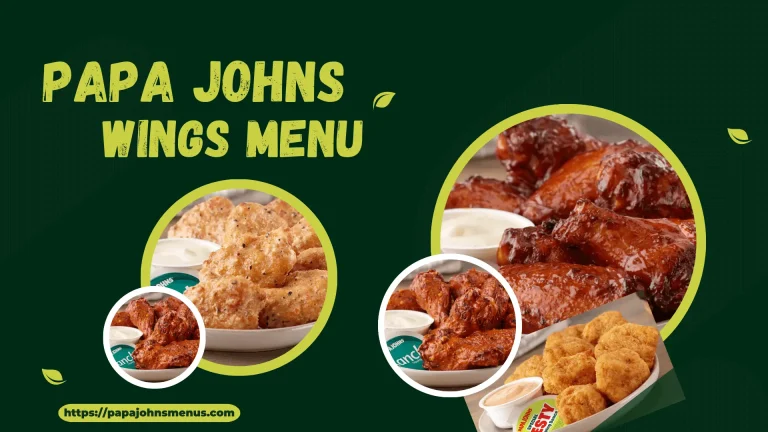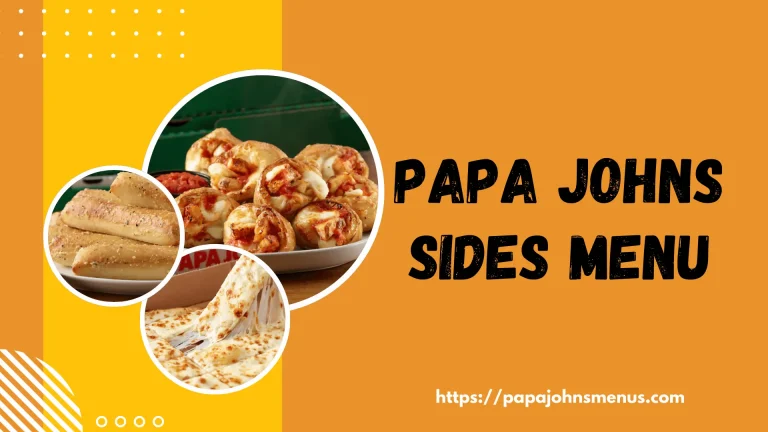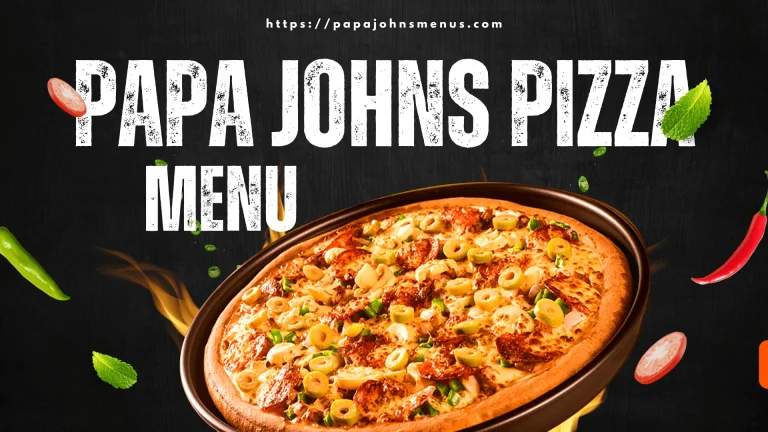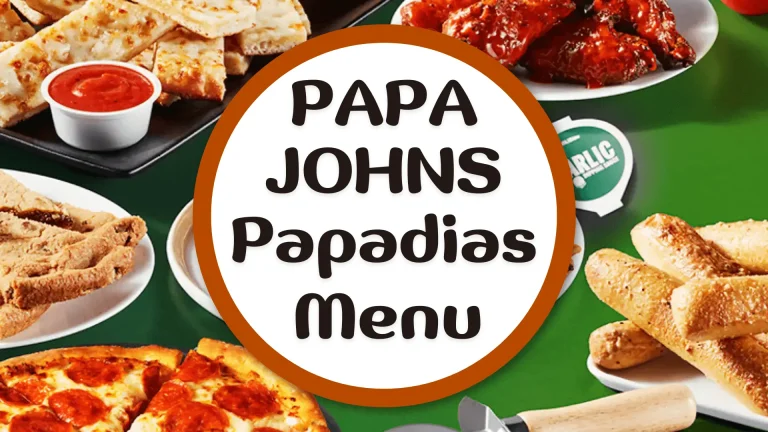Papa Johns Gluten Free Pizza Crust, Ingredients and Nutritional Info
Are you craving pizza but worried about gluten in your diet? Many people face the same challenge. Gluten sensitivity or celiac disease makes it hard to enjoy classic favorites like pizza without feeling uncomfortable later. The search for a safe yet tasty option often leaves people frustrated and unsure about what to order.
Papa John’s menu has stepped in with its gluten-free options designed for pizza lovers who want flavor without the gluten. Explore everything you need to know — from ingredients and preparation to prices, nutrition, and reviews. This way, you’ll have all the details to decide whether Papa Johns gluten free pizza is the right choice for you.
What is Papa Johns Gluten Free Pizza?
Papa John’s offers a special crust made without gluten to give pizza lovers a safe alternative. This crust is made from ingredients like sorghum, teff, amaranth, and quinoa, which are naturally gluten-free. It’s thin, crispy, and designed to hold all the classic Papa John’s toppings without falling apart.
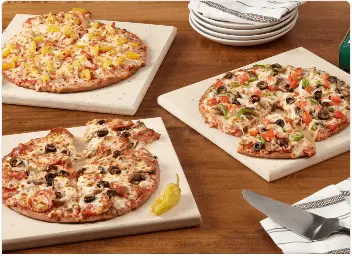
It’s important to know that gluten-free pizza is prepared in a kitchen that also handles regular dough. This means cross-contact can happen. Because of this, the pizza is best for people who choose to avoid gluten for lifestyle reasons, not those with severe celiac disease or extreme gluten sensitivity.
With the same sauces, cheese, and fresh toppings available, this option gives you the chance to enjoy a familiar Papa John’s flavor while staying closer to your dietary needs.
Papa Johns Gluten Free Crust Ingredients
The crust is crafted with a blend of ancient grains and simple ingredients. Here’s what goes into it:
Main Crust Ingredients
- Sorghum flour – a gluten-free whole grain that adds mild sweetness.
- Teff flour – rich in fiber and minerals, which gives the crust a nutty flavor.
- Amaranth flour – adds protein and a slightly earthy taste.
- Quinoa flour – boosts nutrition with protein and essential amino acids.
- Starch blend (tapioca, potato, cornstarch) – keeps the crust light and crispy.
Binding & Texture Ingredients
- Modified food starch – helps bind the crust together.
- Olive oil & canola oil – provide moisture and crispness.
- Yeast – makes the crust rise slightly and adds flavor.
- Sugar – a touch of sweetness to balance the grains.
- Salt – enhances the overall taste.
Toppings & Sauces
The crust can be topped with the same sauces, cheese, and fresh toppings found on the regular Papa John’s menu:
- Original pizza sauce (made with vine-ripened tomatoes).
- Mozzarella cheese (100% real cheese).
- Fresh veggies, meats, and specialty toppings of your choice.
Nutritional Information for Papa Johns Gluten Free Pizza
The gluten-free crust is designed to offer a lighter option while still being satisfying. Here’s a breakdown of the nutrition (per serving, which is typically 1 slice of a small 10″ pizza with only cheese and sauce):
| Nutrient | Amount Per Serving |
| Calories | 150 Cal |
| Total Fat | 18 g |
| Saturated Fat | 3 g |
| Cholesterol | 15 mg |
| Sodium | 550 mg |
| Total Carbohydrates | 130 g |
| Dietary Fiber | 9 g |
| Sugars | 2 g |
| Protein | 16 g |
What Affects Nutrition?
- Toppings – Adding meats like pepperoni or sausage increases calories, fat, and sodium.
- Cheese portions – Extra cheese means more protein, but also more fat and calories.
- Vegetable toppings – Lower in calories, add fiber and nutrients.
Key Notes
👉The gluten-free crust has similar calories to the original thin crust, but offers a different texture and flavor.
👉It’s a gluten-free option, not a low-calorie option.
👉Ideal for customers who want to enjoy pizza without gluten but still crave the full Papa John’s flavor.
Is Papa Johns Gluten Free Pizza Safe for Celiacs?
While Papa John’s offers a certified gluten-free crust, there are important details to know before ordering if you have celiac disease or severe gluten sensitivity.
What You Should Know
- Certified crust – The gluten-free crust itself is made with ancient grains (sorghum, teff, amaranth, quinoa) and tested to meet gluten-free standards.
- Shared kitchens – Papa John’s pizzas, including gluten-free, are prepared in kitchens where wheat-based products are also handled.
- Cross-contact risk – Utensils, ovens, and prep areas may come into contact with gluten-containing ingredients.
Who Should Eat It?
- Safe for gluten-sensitive eaters – Good for people who choose to reduce gluten or have mild intolerance.
- Not 100% safe for celiacs – Due to cross-contamination risks, Papa John’s states their gluten-free pizzas are not recommended for those with celiac disease.
Papa John’s Disclaimer
Papa John’s clearly notes:
The crust is certified gluten-free. However, they cannot guarantee a completely gluten-free environment. Customers with severe gluten reactions should avoid it.
Allergen Information & Cross-Contamination Risks
Papa John’s makes an effort to provide clear allergen information for customers with dietary needs. However, when it comes to gluten-free pizza, there are a few important risks to understand.
| Allergen | Present or not? |
| Milk/Dairy | Yes (due to cheese) |
| Wheat/Gluten | No |
| Soy | Yes |
| Eggs | Yes |
| Tree Nuts/Peanuts | No |
| Fish/Shellfish | No |
Cross-Contamination Risks
Even though the crust is certified gluten-free, risks exist because:
- Shared Ovens – All pizzas are baked in the same ovens.
- Shared Utensils – Pizza cutters, trays, and prep tools may touch gluten-containing pizzas.
- Shared Surfaces – Prep counters and ingredient bins can lead to flour contact.
Papa John’s is transparent about this, stating their gluten-free pizza is not for celiacs.
Real-World Feedback (Pros & Cons)
Hearing from real customers helps set expectations about this gluten-free option. Here’s what people commonly say online:
| Pros | Cons |
| Tastes like regular pizza – good flavor and texture compared to other chains. | Cross-contact risk – shared ovens and prep areas; not safe for celiac. |
| Convenient – available nationwide on the Papa John’s menu. | Limited size – gluten-free crust only comes in a small (10”) pizza. |
| Variety – customizable with sauces, cheeses, and toppings. | Price vs. portion – considered expensive for the small size. |
| Good option for casual gluten avoiders, not strict medical diets. | Texture concerns – some find it thin, dry, or cracker-like. |
Safe-Ordering Tips (Minimize Cross-Contact)
Ordering gluten-free at Papa John’s can be tricky since the kitchens aren’t fully gluten-free. While there’s no guarantee against cross-contact, you can take a few steps to reduce risk when placing your order.
- Use order notes – Add a clear note like “Please use fresh gloves and a clean cutter for gluten-free pizza”.
- Request separate boxing – Ask staff to place your gluten-free pizza in a fresh, clean box away from other pizzas.
- Avoid rush times – Fewer orders mean staff are less rushed, so there’s a better chance your pizza gets careful handling.
- Pick-up vs. delivery – Picking up in person allows you to double-check with the staff that your pizza was handled carefully.
These steps don’t eliminate risk, but they help you make the most informed choice.
Conclusion
Now you have all the facts to make a confident choice whether Papa Johns gluten free pizza is right for you. You know what it’s made of, how it’s prepared, and the risks and benefits that come with it. The key is knowing the risks, weighing the benefits, and deciding if it’s the right choice for your lifestyle.


